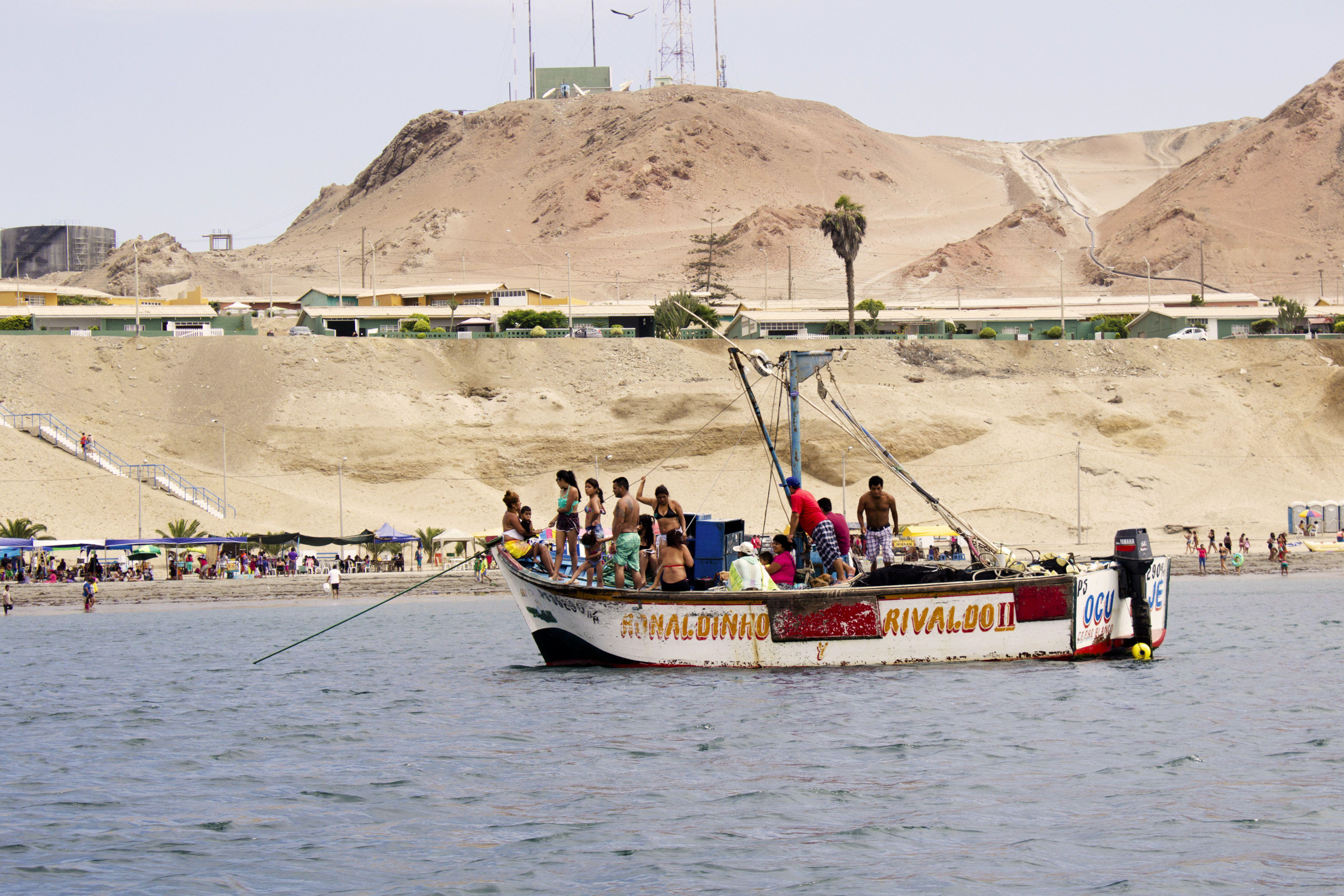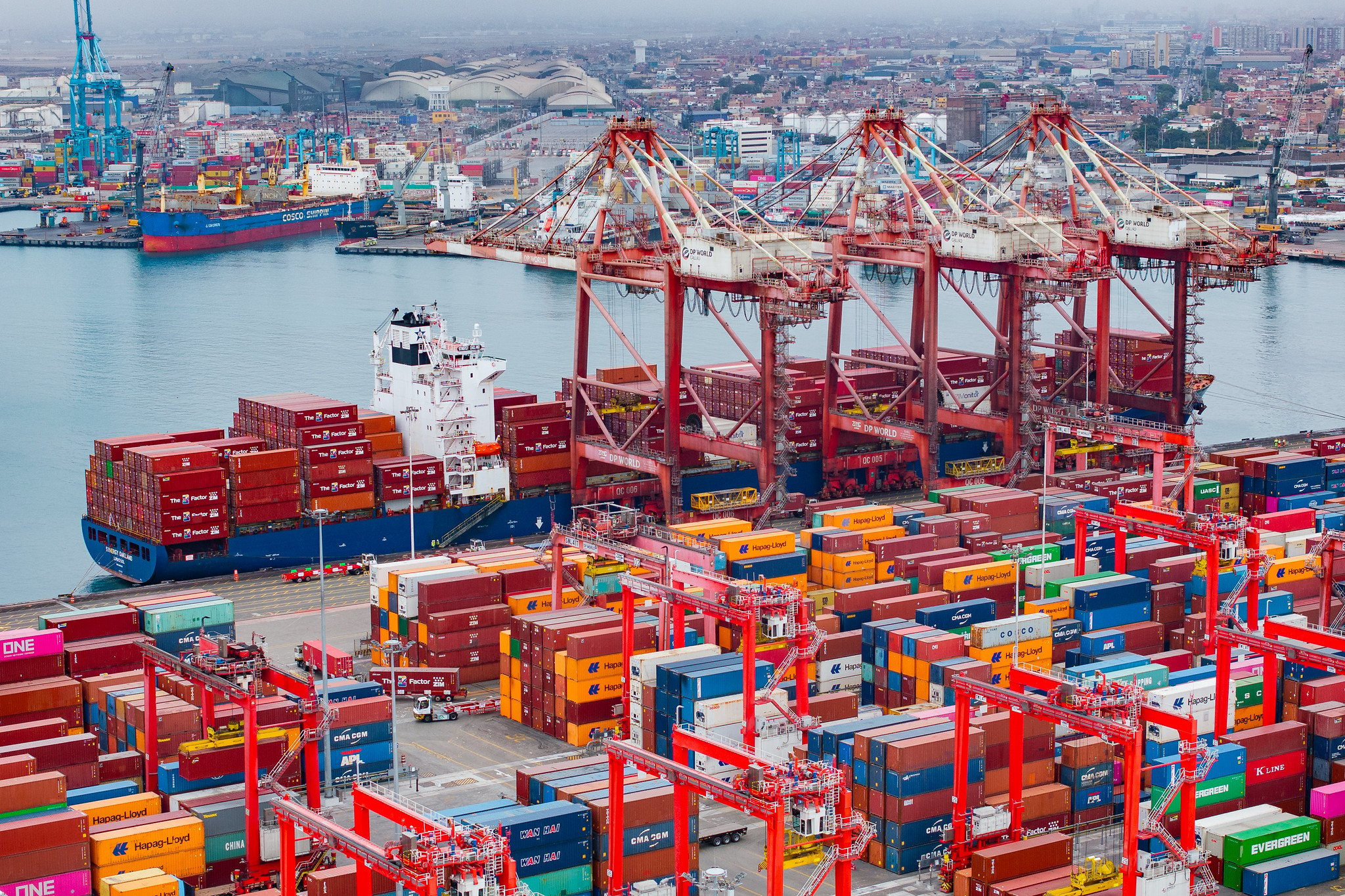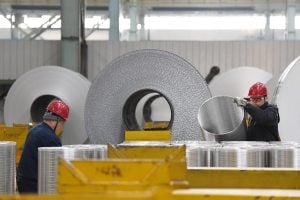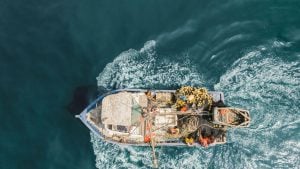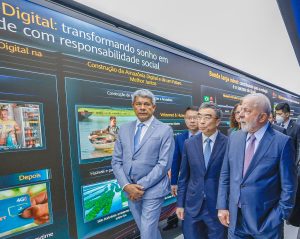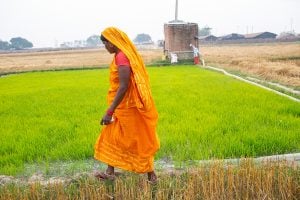“When there is wind, everything goes black,” says Washington Espinoza, an artisanal fisher from San Juan de Marcona in southern Peru, the coastal town that is the country’s leading iron producer. “When there is wind, all the metal goes into the sea, and it is affecting marine life.”
Espinoza is describing the impacts of mining activity currently underway in the area. But he also expresses concern about new plans that may further threaten its already fragile ecosystem.
Earlier this year, it was announced that the southern Peruvian district of Marcona, of which Espinoza’s town is the capital, is set to become a new hub for mining activity in Peru, driven by the construction of what will be the country’s third largest port, behind the central hub of Callao and the soon-to-open Chancay. The San Juan de Marcona Port Terminal will be run by a subsidiary of the Chinese company Jinzhao Mining and could potentially unlock mining investments of more than USD 15 billion.
However, in a region where distrust of mining projects is common and Chinese investors have struggled to win local support, the project has been met with scepticism among many residents and NGOs, with some raising concerns over its potential impacts on local environments and people.
A new mega-port
Marcona is a fishing village some 530 kilometres south of Peru’s capital, Lima. Alongside its iron ore reserves, it is home to two protected natural areas: the San Fernando and Punta San Juan national reserves. Both offer refuge to the world’s largest colony of the threatened Humboldt penguin, and other species such as sea lions, anchovies, crabs and the endangered blue whale.
The proposal for a port terminal in this locality is not new. In 2005, the Peruvian state declared it a project of “public necessity and utility”, given the “important commercial activities” in the area. By 2018, two Chinese companies – Shougang Hierro Peru, a subsidiary of the state-owned Shougang Group, and Jinzhao Mining Peru, a subsidiary of a Chinese construction firm – had formally expressed their interest in building it, according to Peru’s Ministry of Energy and Mines.
It was not until March this year that Jinzhao won the tender for the design, financing, construction, operation and maintenance of the port for 30 years, with investments of USD 405 million expected. The company will also operate Pampa de Pongo, an iron mine under development some 40 kilometres east of Marcona that is home to some of the largest iron ore deposits in Latin America, from which it plans to export more than 20 million tonnes of iron per year.
The new terminal will reportedly be a multi-purpose port, featuring a dedicated dock for the handling of minerals, according to the ProInversión, a government agency that seeks to attract foreign private investment in Peru. It is said that this will enable the activation of at least nine iron, copper, zinc and molybdenum mining projects in the country’s south.
The government has said the port will begin operations in 2028, and could handle some 19 million tonnes of cargo each year. Over 35 million tonnes passes annually through Callao, the country’s largest port, while Chancay foresees the handling of some 34 million tonnes. Authorities claim Marcona could eventually have the capacity to handle 40 million tonnes each year.
Fears over mining expansion
Despite the touted benefits of the new port and the mining projects it could enable, previous experiences with mining companies and their track record in the region have aroused scrutiny and scepticism among some observers.
Currently, 72% of Marcona district is reportedly occupied by such concessions, mostly held by Peruvian company Marcobre and Shougang Hierro Peru.
The latter was founded in 1992, when nationalised mine Hierro Peru (Iron Peru) was bought by the Chinese company following its opening to privatisation by then-president Alberto Fujimori. Shougang has since faced penalties for a series of labour and environmental infractions, receiving 98 sanctions for the latter, according to the environment ministry’s Agency for Environmental Assessment and Enforcement (OEFA).
These have included the leakage of particulate matter from crude oil and iron concentrate stores, and an environmental emergency that was declared due to a broken pipe with highly toxic mine tailings.
Shougang “has distinguished itself as one of the main violators of human rights in the country,” claims Julia Cuadros, a researcher on Chinese investment in Peru and Latin America for the NGO CooperAcción. She suggests that “it is natural to fear a repetition of the same thing.”
In the OEFA database of sanctions, Shougang is the mining company with the 17th highest number of infractions in Peru; a 2017 Boston University study highlighted that Chinese companies have received comparatively fewer environmental sanctions than other firms. However, it is in labour relations that Shougang has faced its strongest challenges, encountering repeated strikes and violent protests in its three decades in Marcona, amid worker discontent.
The Boston University report points to difficult relations between the company and the Marcona community. “Objectively, Shougang has not performed significantly worse in terms of labour standards or environmental impact than its Peruvian or international counterparts,” it states, but highlights how it “has not won over the hearts and minds of their neighbours”.
For the fishers, the impact of pollution by mining companies has been felt, for example, through the scarcity of red sea urchins locally, which had in recent years become an increasingly popular export. Their number is said to have fallen as a result of overpopulation of an invasive type of algae. “The strong wind from Marcona makes the iron fall into the sea and it is a mineral that causes these invasive algae to reproduce aggressively,” says Juan Carlos Saavedra, a member of a Marcona artisanal fisher community who has been diving and fishing for 18 years. “We just want to avoid the same thing happening with the new projects.”
Some locals and NGOs fear similar challenges at the Marcona port as have been seen during the construction of the upcoming mega-port of Chancay, 80 kilometres from Lima. According to the Peruvian Society of Environmental Law (SPDA), the environmental impact study for Chancay, an investment by Chinese company Cosco International, has not sufficiently considered all the adverse impacts, including its measures to protect adjacent wetlands.
In a 2021 report, Dialogue Earth highlighted the damage to nearby houses that had occurred during blasting linked to the port’s construction, as well as the concerns among local residents about the possible effects on the nearby Santa Rosa wetland. During a later report from the town in 2023, observers told how the company had launched legal proceedings against inhabitants who had opposed the project.
Cosco told Dialogue Earth that they only sought to prosecute those who had “attacked the company’s image”, and highlighted compensation schemes they have offered to residents.
New project, new doubts
The awarding of the new Marcona terminal to Jinzhao has also taken place amidst an alleged case of corruption, said to involve the general manager of its Peruvian business, as well as senior government figures and state officials, and the exchange of political favours. José Ávila Herrera, a former member of the National Board of Justice, allegedly negotiated with former justice minister Felix Chero to secure favours, including to supposedly aid Jinzhao in gaining control of land to build the Marcona port.
The head of the Jinzhao port project, Edison Poma, distanced the company from the allegations, claiming in an interview that this was instead a case of confusion “due to a lack of communication between state entities”.
Researcher Cuadros suggests concerns about the involvement of Chinese companies in corruption cases. “Such lobbying would be something very obscure and, although companies of other nationalities also do it, the problem is that when it is an investment as large as this one, the impact is also large.”
Several Chinese companies have faced investigation in corruption cases in Latin America, including in Bolivia and Ecuador, which have contributed to calls for the country’s government to help ensure accountability for companies operating overseas – efforts that are reportedly beginning to progress within China.
The environmental impact study of the Marcona mega-port has also proven controversial among some locals. In recent years, Jinzhao has carried out a detailed study, which was approved in 2023 by Senace, the national environmental certification body. But fishers say that this was not well received locally.
“We are not against the investment,” says Espinoza, who is president of the town’s artisanal fishing community group, which brings together over 1,500 local fishers. He expresses reservations around the involvement of a Chinese business, claiming that “the issue is with the Chinese companies. If Jinzhao doesn’t do this study properly, it will be the same [outcome] as with Shougang.”
According to a communiqué from ProInversión, this study was not part of the evaluation process for Jinzhao’s bid, but will have to be presented by the company once the concession contract has been signed; no information is yet available on when this will take place. They will also have to provide an update to a final engineering study, within a maximum period of two years.
Although it is an investment of Chinese capital, it is a public project and we are obliged to comply with all the laws of the Peruvian stateEdison Poma, Jinzhao port project head
Poma, the Jinzhao port project head, said in his interview that the proposal put together for its bid also involved a third-party company hired by ProInversión to oversee and verify its technical and environmental compliance. “Although it is an investment of Chinese capital, it is a public project and we are obliged to comply with all the laws of the Peruvian state,” he added.
Dialogue Earth sought interviews with ProInversión and Jinzhao about the issues raised in this article and sent queries directly to the companies by email. However, no response had been received by the time of publication.
“When the national government declares these investments to be of national interest, they are simply implemented [without public approval],” claims Cuadros. “And what usually happens is that the population goes from resistance, as in Chancay, to accepting that they are going to have to coexist with this work but without giving up their rights.”
The fishers of Marcona say they will continue to look to assert their rights to their environment and livelihoods. “We don’t want all this natural wealth to be lost for future generations, because being fishermen is something that is practically in our blood,” says Saavedra.
